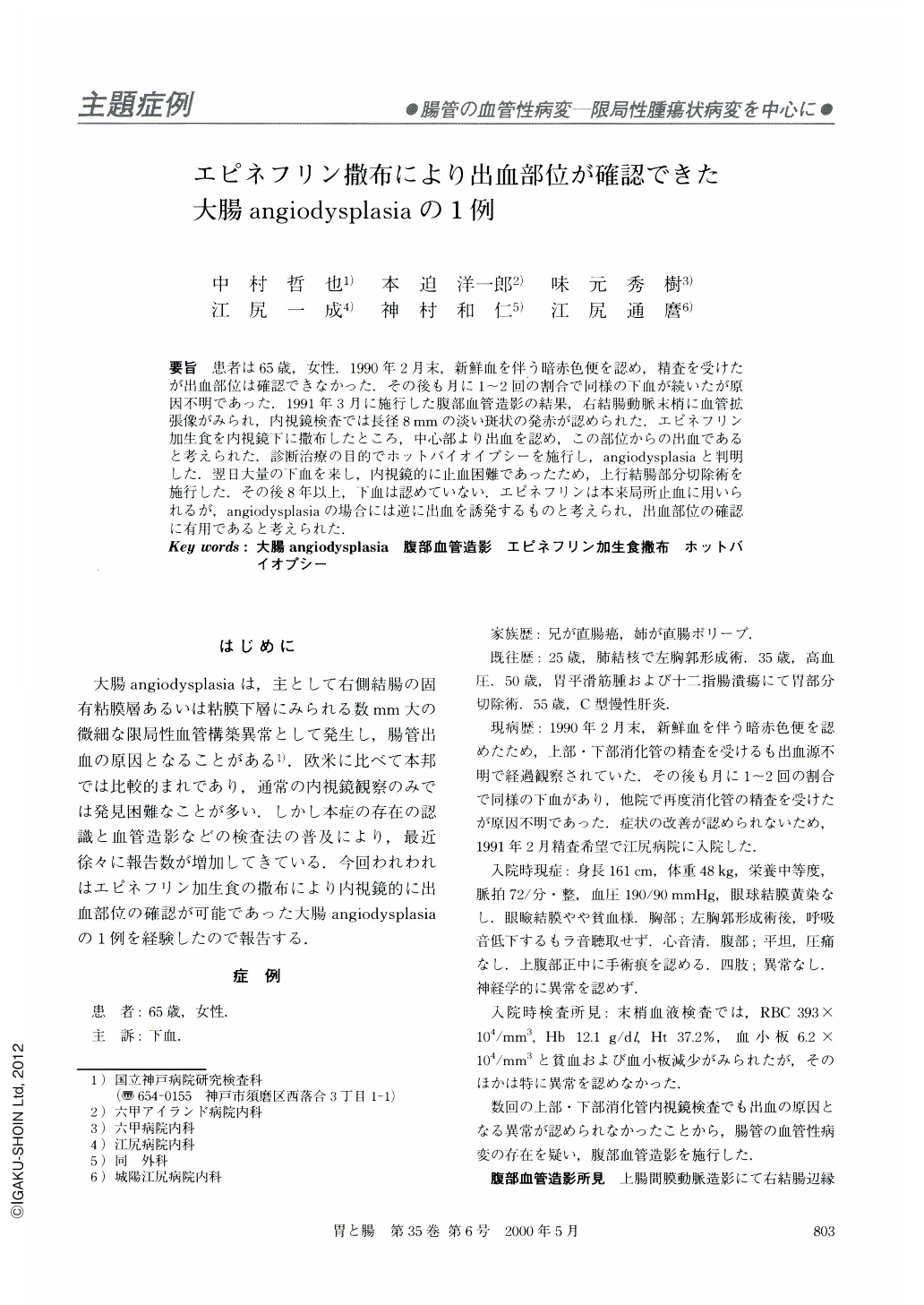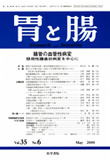Japanese
English
- 有料閲覧
- Abstract 文献概要
- 1ページ目 Look Inside
要旨 患者は65歳,女性.1990年2月末,新鮮血を伴う暗赤色便を認め,精査を受けたが出血部位は確認できなかった.その後も月に1~2回の割合で同様の下血が続いたが原因不明であった.1991年3月に施行した腹部血管造影の結果,右結腸動脈末梢に血管拡張像がみられ,内視鏡検査では長径8mmの淡い斑状の発赤が認められた.エピネフリン加生食を内視鏡下に撒布したところ,中心部より出血を認め,この部位からの出血であると考えられた.診断治療の目的でホットバイオイプシーを施行し,angiodysplasiaと判明した.翌日大量の下血を来し,内視鏡的に止血困難であったため,上行結腸部分切除術を施行した.その後8年以上,下血は認めていない.エピネフリンは本来局所止血に用いられる,angiodysplasiaの場合には逆に出血を誘発するものと考えられ,出血部位の確認に有用であると考えられた.
A 65-year-old woman was admitted on March 1991 for recurring anal bleeding from unknown causes since February, 1990. Angiography showed hypervascular staining at the peripheral branch of the right colic artery. Colonoscopy revealed a flat red spot 8 mm in diameter in the middle portion of the ascending colon. Hemorrhaging from the lesion occurred after the spot was sprayed with 0.05 mg/ml epinephrine. A hot biopsy was carried out to stop the bleeding. The lesion was diagnosed as angiodysplasia because of the histological findings of the hot biopsy specimen. Anal bleeding recurred on the day after the hot biopsy. So partial resection of the ascending colon was carried out. Anal bleeding has not occurred during the period of over 8 years since the operation. Epinephrine is one of the hemostats, and it probably induces hemorrhage, especially in cases of angiodysplasia.

Copyright © 2000, Igaku-Shoin Ltd. All rights reserved.


